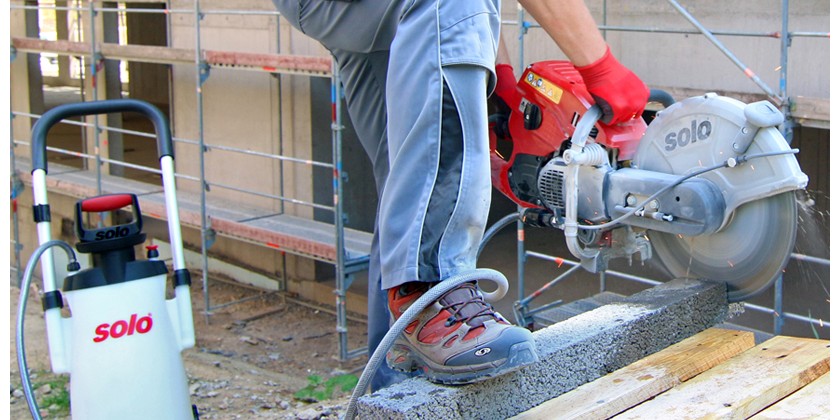
Workplace safety is an important issue for employers and employees alike. In a construction environment, power tools and unstable objects can present dangers that require strong safety protocols. Airborne construction dust is one such hazard due to the dangers of silica exposure.
THE PROBLEM:
Silica, a mineral found in stone, concrete, brick and other construction materials, can create serious workplace hazards when particles become airborne during dry cutting. These tiny dust particles hang in the air, and when inhaled can make their way into workers lungs. Breathing this dust can cause Silicosis, a serious and incurable respiratory disease. And according to the Georgia Tech Research Institute, it is estimated that each year about 250 workers die from silica exposure.
SAFE PRACTICES FOR REDUCING AIRBORNE PARTICLES
- Vacuum Dust Collection Systems (VDCS) Vacuum dust collection systems can be beneficial for controlling airborne particulates. These systems work alongside the cutting machinery to remove dust as the stone is being cut. Even so, this method allows airborne dust and may not keep exposure below OSHA’s permissible exposure limit.
Another problem with (VDCS’s) is that workers in outdoor construction environments typically do not have access to the electricity needed to operate these systems. In addition, many construction sites involve multiple and moving operations occurring simultaneously that can generate widespread silica dust. - Respiratory Protection Through Wet Cutting Wet cutting is a highly efficient method for controlling dust when cutting concrete materials because it controls the exposure at the source. Both bench and portable type saws typically have ports on the upper blade guard where water supply lines can be attached. If water is not readily available at the work site, portable pressure tanks can provide a convenient mobile water supply. Wet cutting ensures that water is continuously fed to the blade during the cutting process, reducing airborne dust particles. Furthermore, according to OSHA, respiratory protection is not necessary when using effective wet methods.
- Respiratory Protection When VDCSs and wet cutting are not practical or do not reduce silica exposures to OSHA’s permissible exposure limit, workers will need respiratory protection. If respirators are needed, employers will be required to put into place a written program that complies with OSHA’s Respiratory Protection standard. This includes fit testing and training of the proper use of the equipment.
Employers are responsible for all worksite safety as well as providing equipment in good condition to minimize silica dust. In addition, keeping equipment in good working condition and training workers on how to use the equipment will reduce illness and injury due to work place hazards.
More info: https://www.osha.gov/Publications/silica/OSHA_FS-3627.pdf
For information on SOLO pressure water tanks see: https://us.solo.global/
